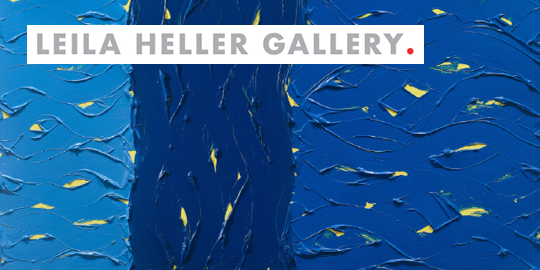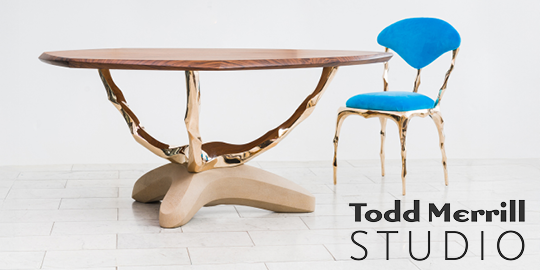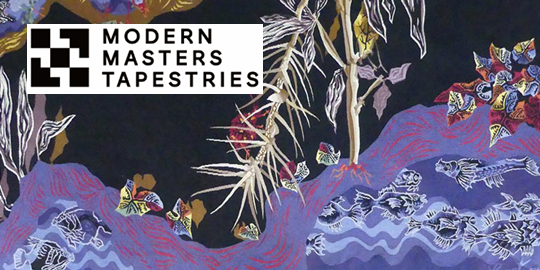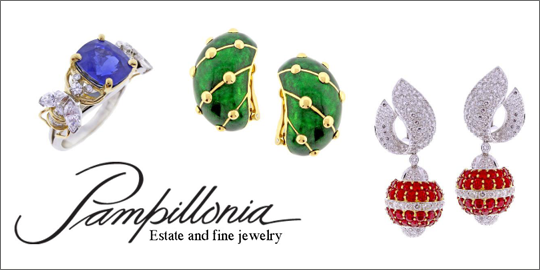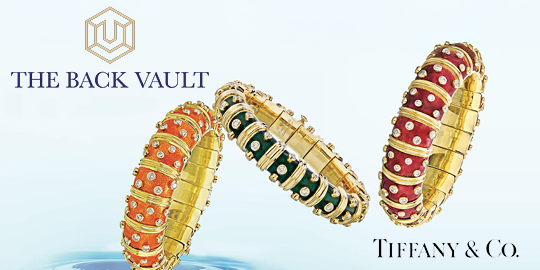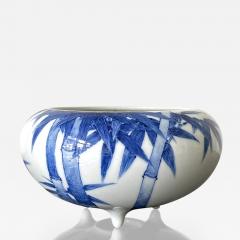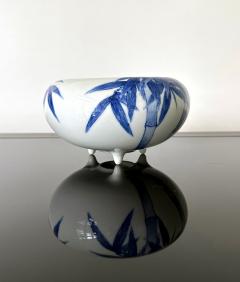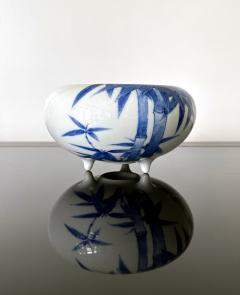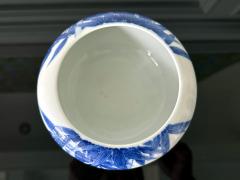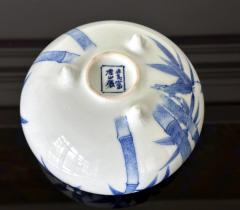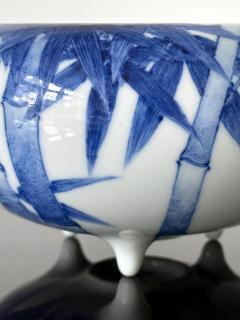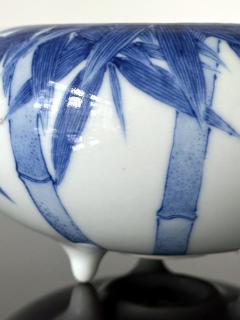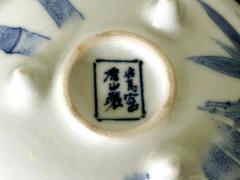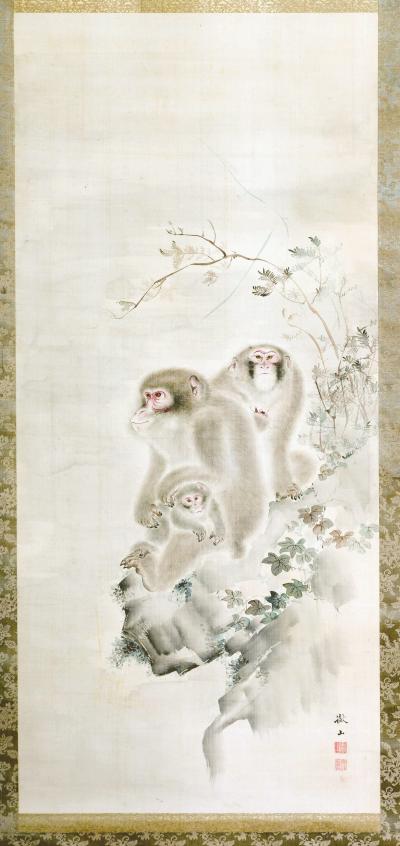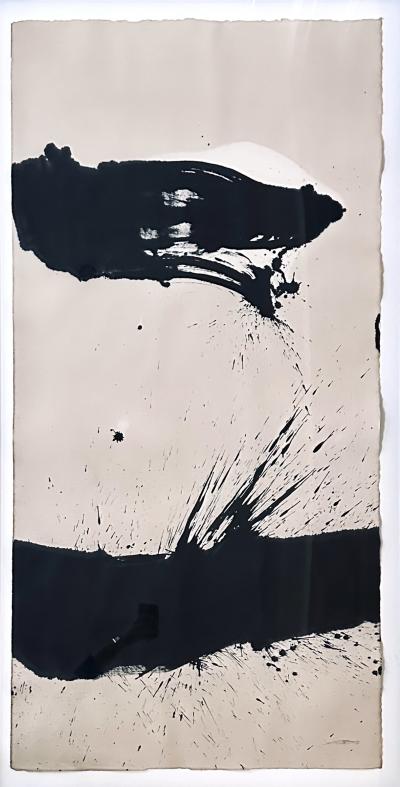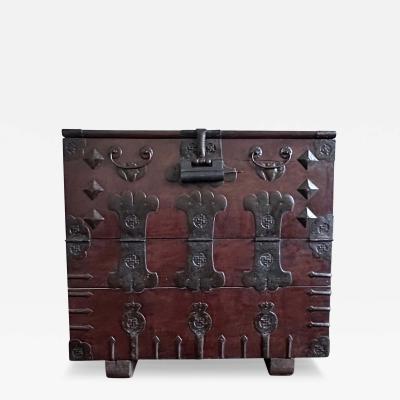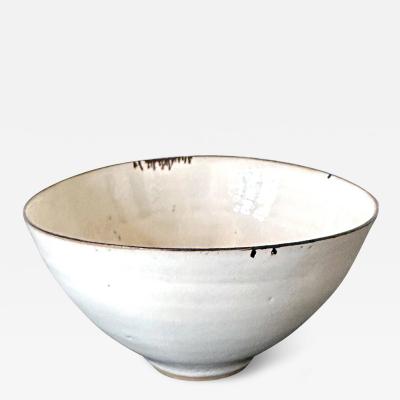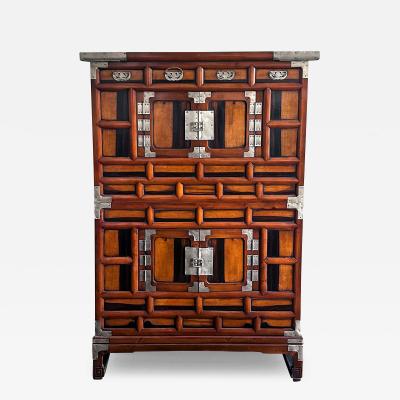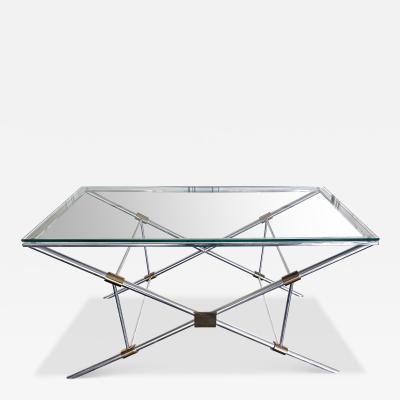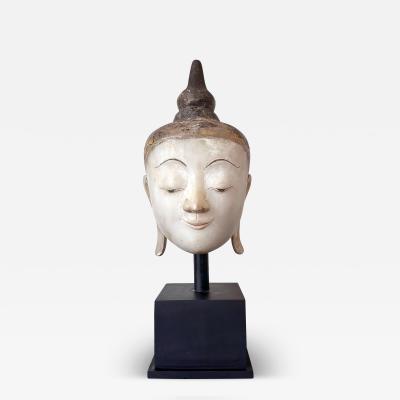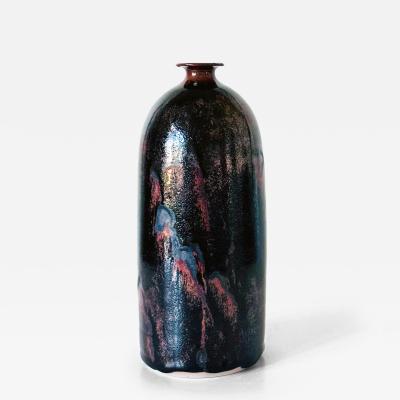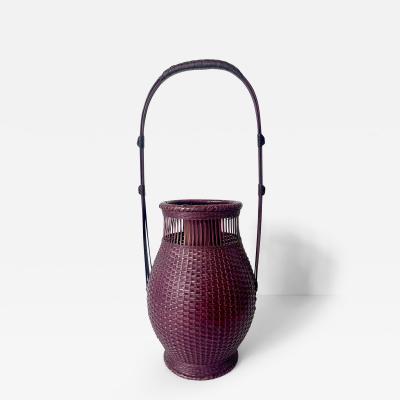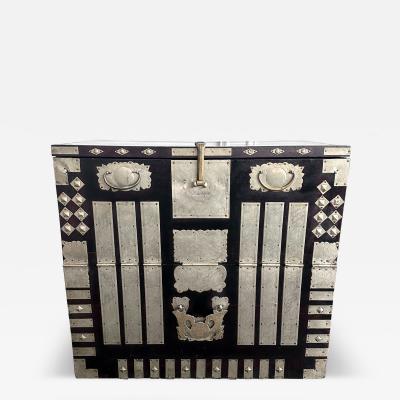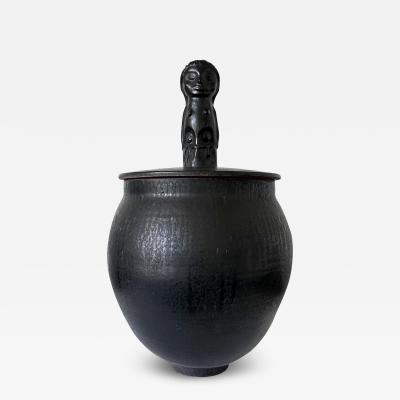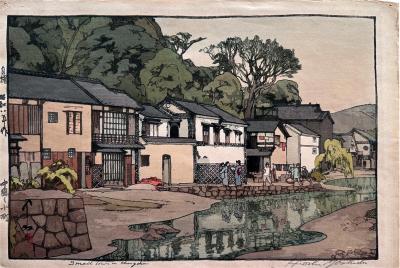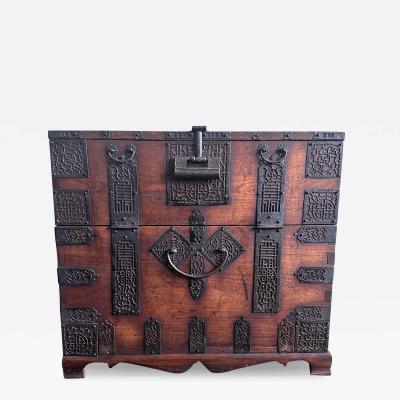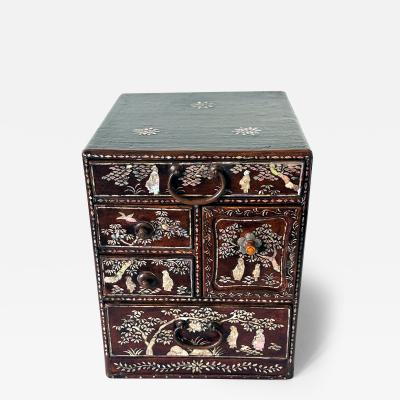Fine Japanese Glazed Ceramic Bowl by Makuzu Kozan
-
Description
Tri-pod ceramic bowl likely used as an incense burner (koro) by Japanese Imperial potter Makuzu Kozan (1842-1916) circa late Meiji period. The signature indicates that it was produced around Meiji 30th year (1897). A fine example of the artist's work belonging to the middle period of his underglaze paint phase (started around 1887 until his death), the surface of the koro was painted in beautiful shades of blue to depict clumps of bamboo, one of the favorite flora subjects in Asian art. The painterly work is typical of Kozan's work in that period when different shades of the blue were used to achieve a subtle dimensional visual effect. The base is signed in underglaze blue "Makuzu Kiln Kozan Sei" within a rectangular seal. The bowl is in the form of "monk's begging bowl" and supported with three short feet. The shape is often associated with incense burner (koro), although it may be used for other purpose like pen wash or simply as an okimono item.
Also known as Miyagawa Kozan (1842–1916), Makuzu Kozan was one of the most established and collected ceramist from Meiji Period. Born as Miyagawa Toranosuke, Kozan established his pottery studio in Yokohama around 1870s and later became one of the appointed artists to the Japanese Imperial household. His work was exhibited in many international fairs that the Meiji government participated at the turn of the century and won many grand prizes. Being one of the most creative ceramists, Kozan started experimenting with new chemical colors from the West in the format of his porcelain glaze around 1880s. New colors allowed him to create underglaze designs that appeared bright, smooth and glossy. He even invented his own receipt of cobalt blue to achieve a much brighter yet softer shade, as evident on this vase. To create landscape that is realistic and dimensional, more common in the western paintings, he was inspired by the native Japanese ink painting technique developed around 1900 by Yokoyama Taikan (1868-1958) and Hishidan Shunso (1874-1911) called Morotai (Hazy style) and used cobalt blue on the porcelain like ink on paper. The fuki-e technique was demanding and uniquely featured in the works of Kozan studio.
For a bowl with identical shape and same period signature but with a different surface decoration, see illustration 41 on page 100 in "Makuzu Kozan I" by Dr. Yamamoto. -
More Information
Documentation: Signed Origin: Japan Period: 19th Century Materials: Ceramic glazed Condition: Good. Fine condition with minimal wear. Creation Date: circa 1897 Styles / Movements: Asian, Traditional Patterns: Asian/Oriental, Florals/Botanical, Handmade Incollect Reference #: 657483 -
Dimensions
H. 3.25 in; Diam. 6.25 in; H. 8.26 cm; Diam. 15.88 cm;
Message from Seller:
Tishu, based in Atlanta, GA, offers a diverse collection ranging from Neolithic art to 20th-century collectibles, with a focus on Mid-century design, Japanese and Korean art, Asian textiles, and Contemporary Aboriginal art. Driven by a passion for timeless beauty, the gallery is open by appointment only and offers works that span 5,000 years of history. Reach them at 305-400-0561 or tishu@tishugallery.com.


